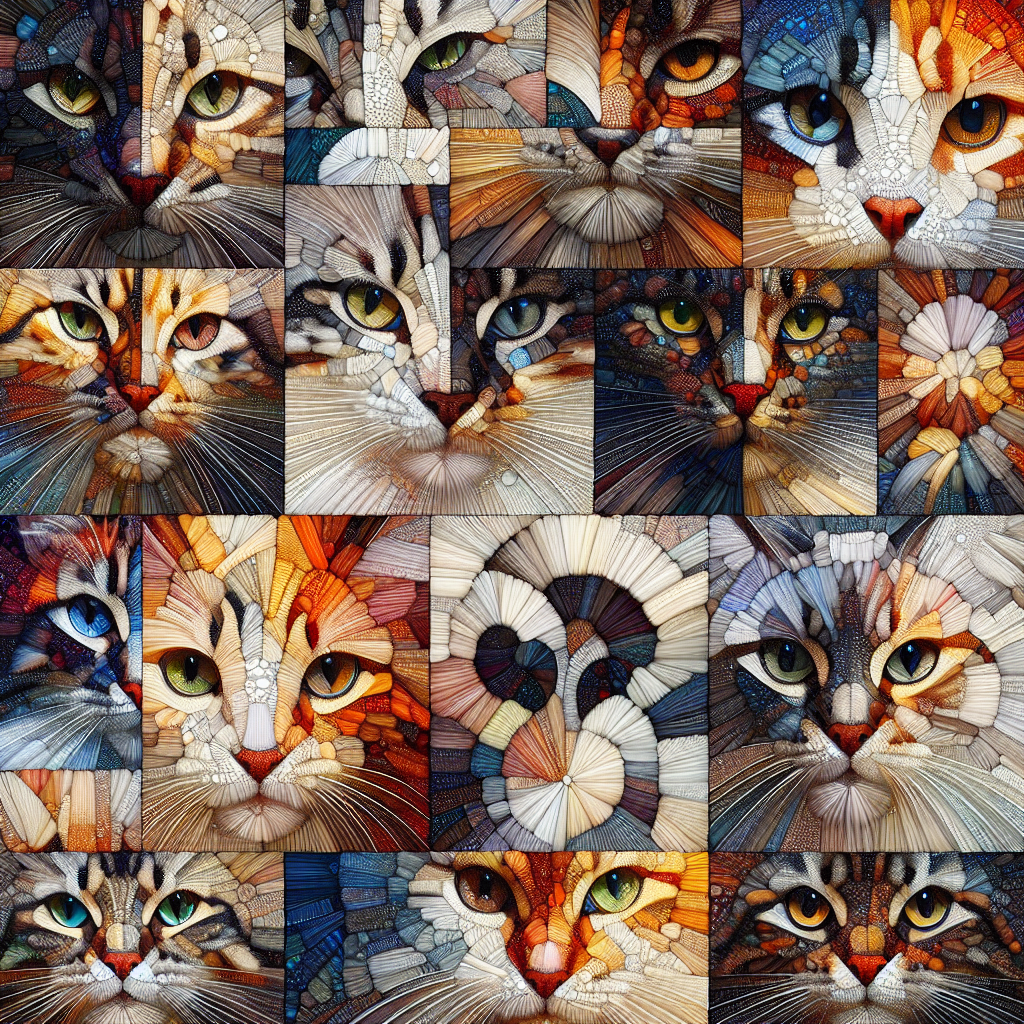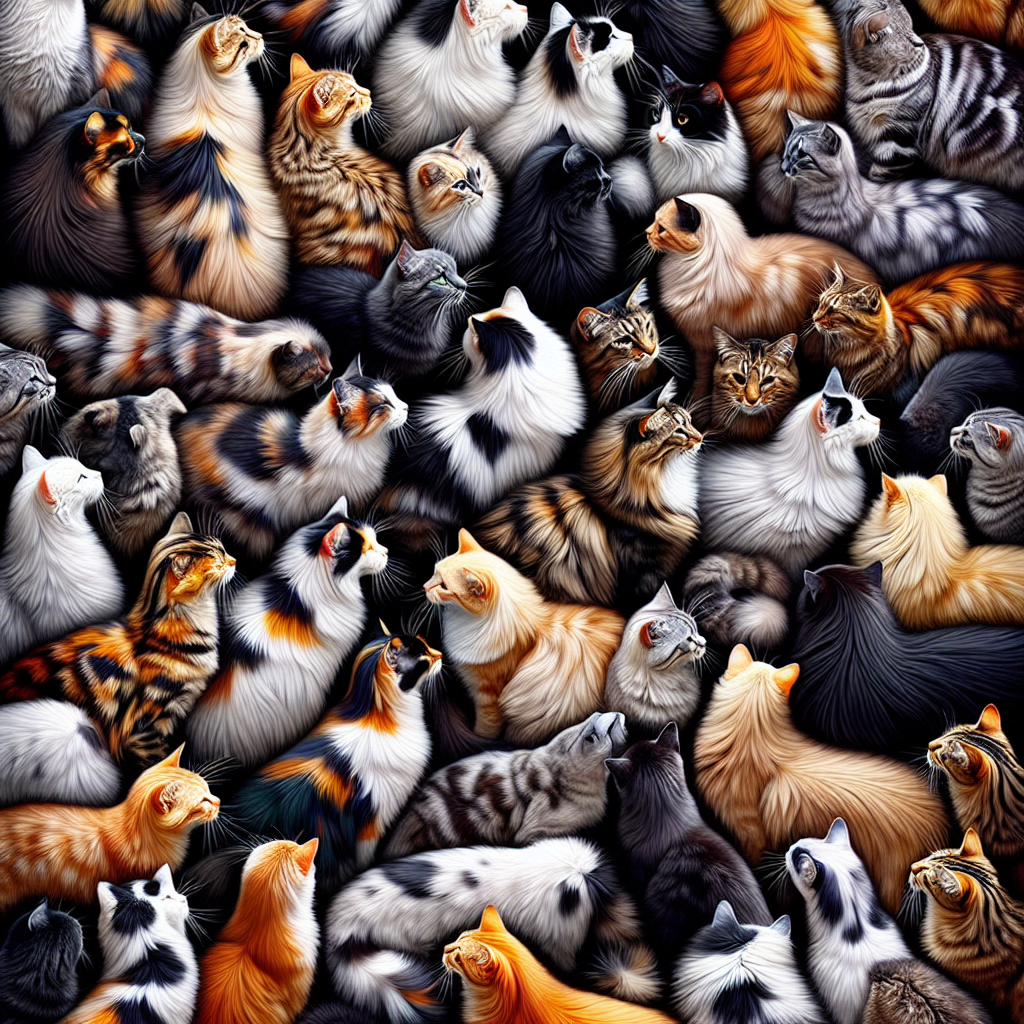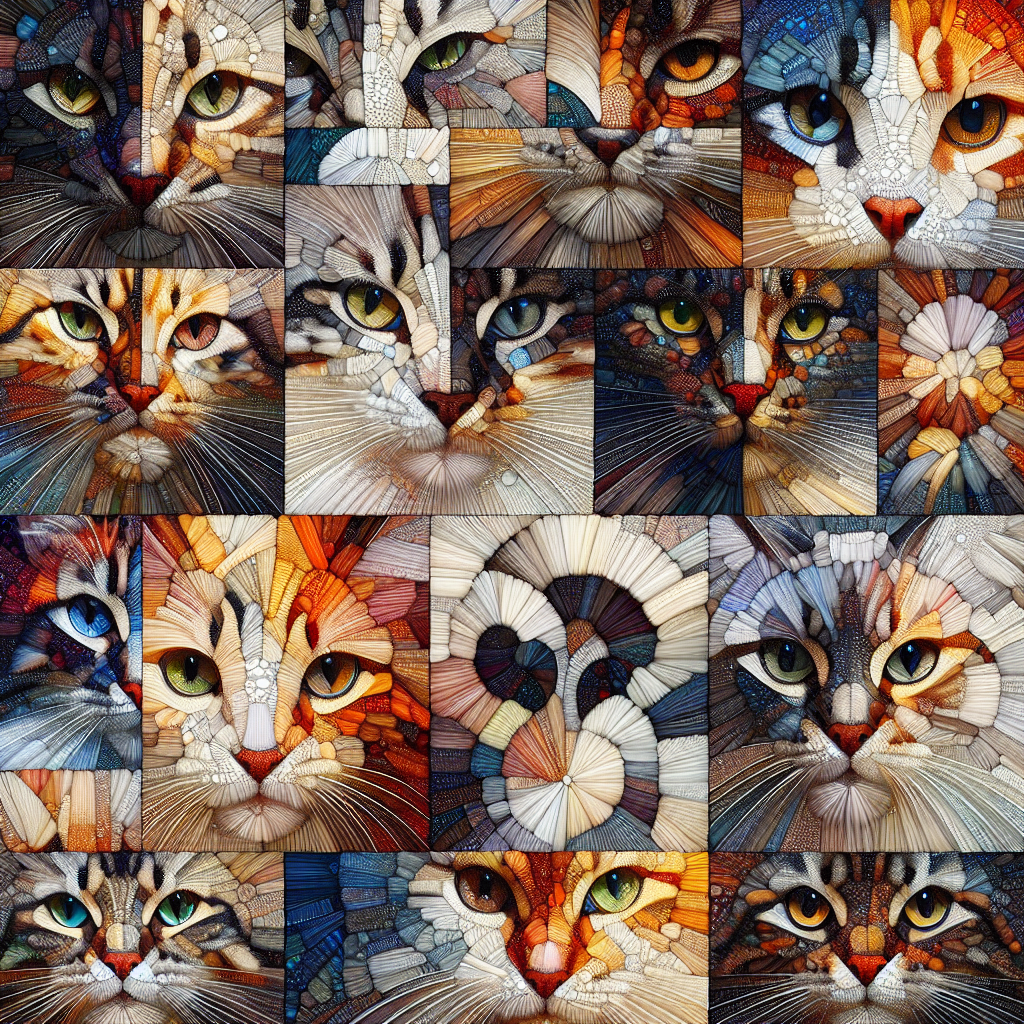In the feline world, there is a fascinating question that often crosses your mind: are all cats tabby cats? Tabby cats, with their distinctive striped or spotted coats, are certainly a common sight. However, the truth about cat genetics and coat patterns might surprise you. From playful Persians to majestic Maine Coons, this article will explore the diverse array of coat patterns found in our furry friends, shedding light on the intriguing world of feline genetics and unraveling the mystery behind our beloved tabby companions. So, get ready to discover the beauty and uniqueness of cats in all their colorful coats!

What is a Tabby Cat?
A Tabby cat, also known as a Domestic Shorthair, is a common and popular type of cat that is known for its distinctive coat patterns. Tabby cats have a unique combination of stripes, swirls, and spots on their fur, which sets them apart from other cats. They are found in various breeds, sizes, and colors, making them a fascinating and diverse group of feline companions.
Definition of a Tabby Cat
A Tabby cat can be defined as a cat with a coat pattern that includes any combination of stripes, swirls, and spots. This pattern is not exclusive to any particular breed and can be seen in both purebred and mixed-breed cats. The term “tabby” is derived from the word “atabis,” which means a type of silk that had a mottled or striped appearance.
Physical characteristics of a Tabby Cat
Tabby cats have certain physical characteristics that are commonly associated with their breed. They usually have a medium-sized body with a muscular build, giving them a balanced and athletic appearance. Their heads are rounded with prominent cheekbones, and their eyes can come in a variety of colors, including green, amber, and blue. Tabby cats have a short, dense coat, which can come in different colors and patterns, as we will explore later in this article.
Variations of Tabby Cats
Tabby cats display a wide range of variations in their coat patterns and colors. The most common tabby patterns include classic, mackerel, spotted, and ticked. Classic tabbies have bold, swirling patterns that resemble a “bullseye” on the cat’s sides, while mackerel tabbies have narrow, parallel stripes that run vertically along their bodies. Spotted tabbies, as the name suggests, have spots instead of stripes, and ticked tabbies have a coat with flecks of color.
Types of Cat Coat Patterns
While tabby cats are one of the most well-known coat patterns, there are several other patterns that cats can exhibit. These coat patterns include solid, bicolor, calico, and tortoiseshell.
Tabby Cats
As previously discussed, tabby cats have various coat patterns that include stripes, swirls, and spots. These patterns can come in different color combinations, creating unique and beautiful coats.
Solid Cats
Solid cats have a uniform coat color without any markings or patterns. They can come in a variety of colors, such as black, white, gray, or orange.
Bicolor Cats
Bicolor cats have a coat that is predominantly white, with patches of color on their bodies. These patches can be any color and are often found on the head, tail, and legs.
Calico Cats
Calico cats are primarily white with patches of two or more colors, typically black and orange. These patches are usually large and irregular in shape, creating a striking and distinctive appearance.
Tortoiseshell Cats
Tortoiseshell cats, also known as “torties,” have coats with a mix of two or more colors, often black and orange. However, unlike calico cats, torties have smaller patches of color that are more blended together, creating a brindle-like pattern.
Genetics of Tabby Cats
The unique coat patterns displayed by tabby cats are the result of genetic factors and the interaction of specific genes within their DNA.
The Agouti Gene
The Agouti gene plays a crucial role in determining the coat patterns of tabby cats. This gene is responsible for the distribution of pigments in the fur, resulting in the various stripes, swirls, and spots seen in tabby cats. The Agouti gene determines whether a cat will have a tabby pattern or exhibit other coat patterns.
How the Agouti Gene Works
The Agouti gene controls the type of pigment produced by the hair follicles. Cats with a functioning Agouti gene will produce two types of pigment: eumelanin, which is responsible for black or brown coloration, and pheomelanin, which produces red or orange coloration. The interaction between these two types of pigments determines the specific tabby pattern a cat will display.
Tabby Patterns and the Agouti Gene
The different tabby patterns, such as classic, mackerel, spotted, and ticked, are determined by the specific variation of the Agouti gene a cat inherits. The presence or absence of certain alleles within this gene affects the distribution and formation of the pigments in the fur, resulting in the unique coat patterns seen in tabby cats.
Non-Tabby Cats
While tabby cats are quite common, not all cats exhibit tabby patterns. There are several other coat patterns that cats can have, which we will explore in this section.
Solid Cats
Solid cats, as mentioned earlier, have a uniform coat color without any markings or patterns. This solid color can range from black to white and everything in between.
Bicolor Cats
Bicolor cats, similar to tabby cats, have a predominantly white coat, but unlike tabbies, they have distinctive patches of color on their bodies. These patches can be solid or tabby patterns.
Calico and Tortoiseshell Cats
Calico and tortoiseshell cats have a mix of colors in their coats, typically black and orange. However, unlike their tabby counterparts, calico and tortoiseshell cats have irregular patches of color that are more blended together, rather than displaying distinct stripes or spots.

Tabby Cats in Popular Breeds
Tabby patterns can be found in various cat breeds, showcasing the versatility and ubiquity of these coat patterns. Let’s explore some of the popular cat breeds that often exhibit tabby patterns.
Maine Coon
The Maine Coon is a large and majestic cat breed known for its friendly and sociable nature. Many Maine Coon cats display tabby patterns, including the classic and mackerel variations.
Bengal
The Bengal cat, known for its striking resemblance to a wild leopard, often exhibits tabby patterns. Bengal cats can have a spotted or marbled tabby pattern in their coats, creating a truly mesmerizing appearance.
Abyssinian
The Abyssinian cat is an elegant and active breed that is often associated with ticked tabby patterns. Their coats have a unique and beautiful “ticked” appearance, with each hair banded with multiple colors.
American Shorthair
The American Shorthair cat is a versatile and adaptable breed that comes in various coat colors. Tabby patterns, both classic and mackerel, are commonly seen in American Shorthair cats, adding to their charm and appeal.
Tabby Cats as the ‘Wild Type’
Tabby cats are considered the “wild type” when it comes to coat patterns in domestic cats. This means that the tabby pattern is the most common and natural pattern found in cats.
Origins of Tabby Patterns
The tabby pattern originated thousands of years ago, and it is believed to have developed from the need for camouflage in the wild. The distribution of stripes and spots on a tabby’s coat helped them blend into their natural surroundings, making them better hunters and allowing them to stay hidden from predators.
How Tabby Cats Adapted
As cats transitioned from the wild to domestication, the tabby pattern remained prevalent due to its genetic dominance. The tabby coat provided a survival advantage in the wild, and as cats became domesticated, these patterns were retained and passed down through generations.
Frequency of Tabby Cats
Tabby cats are so ubiquitous that they make up the majority of cat populations worldwide. This is partly due to the genetic dominance of the tabby pattern, as well as its ability to adapt and thrive in various environments.
Tabby Cats and Coat Colors
Tabby cats come in a diverse range of coat colors, adding to their unique and eye-catching appearance. While there are numerous color variations, let’s explore some of the most common ones.
Orange Tabby Cats
Orange tabby cats, also known as ginger cats, have a coat that ranges from pale orange to deep red. This vibrant and warm color is often associated with male cats, although females can also exhibit this striking hue.
Gray Tabby Cats
Gray tabby cats, also known as blue tabbies, have a coat color that ranges from light gray to a deep, slate blue. This cool and elegant coloration adds to their regal and sophisticated appearance.
Black Tabby Cats
Black tabby cats have a solid black coat, often with faint tabby markings that are visible under certain lighting conditions. These markings can give their coat a subtle shimmer and add depth to their overall appearance.
White Tabby Cats
White tabby cats have a predominantly white coat with tabby markings in various colors, such as gray, orange, or black. The contrast between the white base and the colored markings creates a visually striking and beautiful coat.
Tabby Cats vs. All Other Cats
Tabby cats are considered the “default” coat pattern in cats, making them the majority when it comes to feline populations. Here’s a closer look at why tabby cats are so prevalent and how they compare to other coat patterns.
Majority of Cats are Tabby Cats
Considering the genetic dominance and historical significance of the tabby pattern, it’s no surprise that the majority of cats worldwide are tabbies. Their adaptability, versatility, and attractive coat patterns have made them a popular choice among cat enthusiasts.
Other Coat Patterns in Cats
While tabby cats are the most common, various other coat patterns exist in the feline world. From solid-colored cats to calico and tortoiseshell patterns, each coat pattern has its unique appeal and charm. The diversity of coat patterns adds to the captivating nature of cats, showcasing their individuality and beauty.
Misconceptions about Tabby Cats
Despite their prevalence and popularity, there are a few misconceptions about tabby cats that are worth addressing.
All Cats with Stripes are Tabby Cats
Although tabby cats are known for their stripes, not all cats with stripes are tabbies. Some breeds, such as the Bengal and the Toyger, have been selectively bred to exhibit stripes similar to those of wild cats. However, these cats may not possess the specific tabby patterns associated with the Agouti gene.
All Tabby Cats have ‘M’ Markings on Foreheads
Another common misconception is that all tabby cats have an ‘M’ marking on their foreheads. While many tabbies do have this distinctive marking, it is not a defining characteristic of the tabby pattern. The ‘M’ marking is caused by the way the stripes and swirls on the forehead converge, giving the appearance of an ‘M’ shape.
Tabby Cats are Always Female
Contrary to popular belief, tabby cats can be male or female. The misconception that tabby cats are exclusively female may stem from the fact that the orange tabby coat color is more commonly seen in males than in females. However, male and female cats can both display a variety of tabby patterns, regardless of their coat color.
Conclusion
Tabby cats are a fascinating and diverse group of feline companions known for their unique coat patterns. Whether they exhibit classic , mackerel, spotted, or ticked tabby patterns, these cats captivate us with their beauty and charm. From their origins as the “wild type” and their widespread presence in cat populations to their prevalence in popular cat breeds, tabby cats hold a special place in our hearts. So, whether you have a tabby cat or are simply intrigued by their extraordinary coat patterns, take a moment to appreciate the stunning diversity and timeless appeal of these wonderful feline friends.

